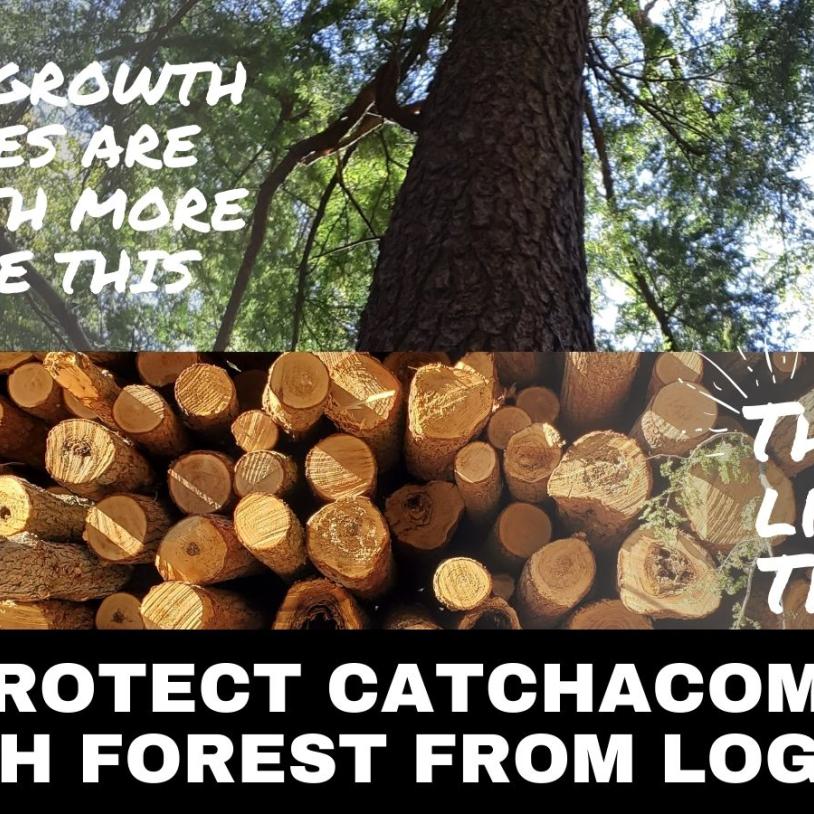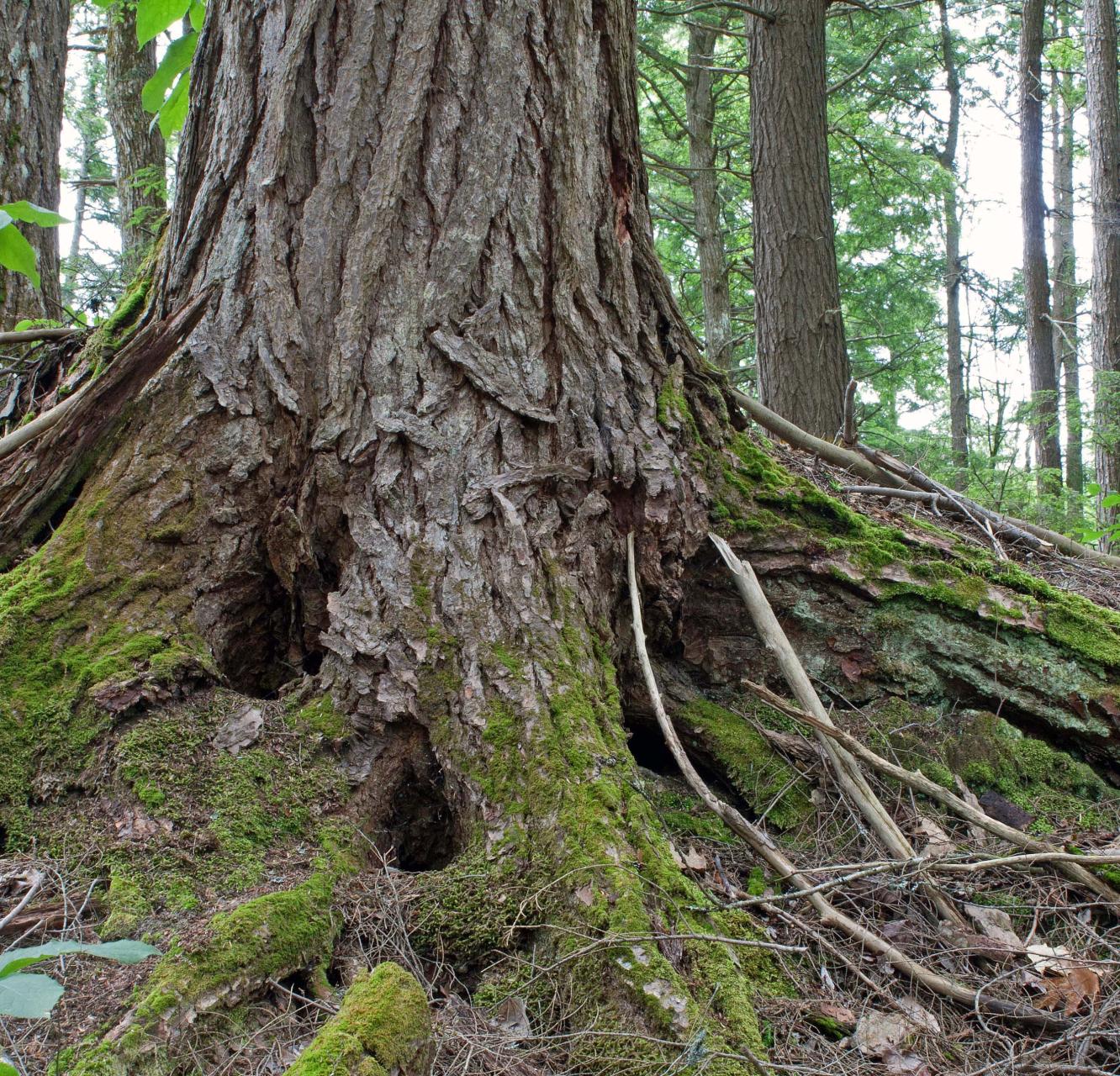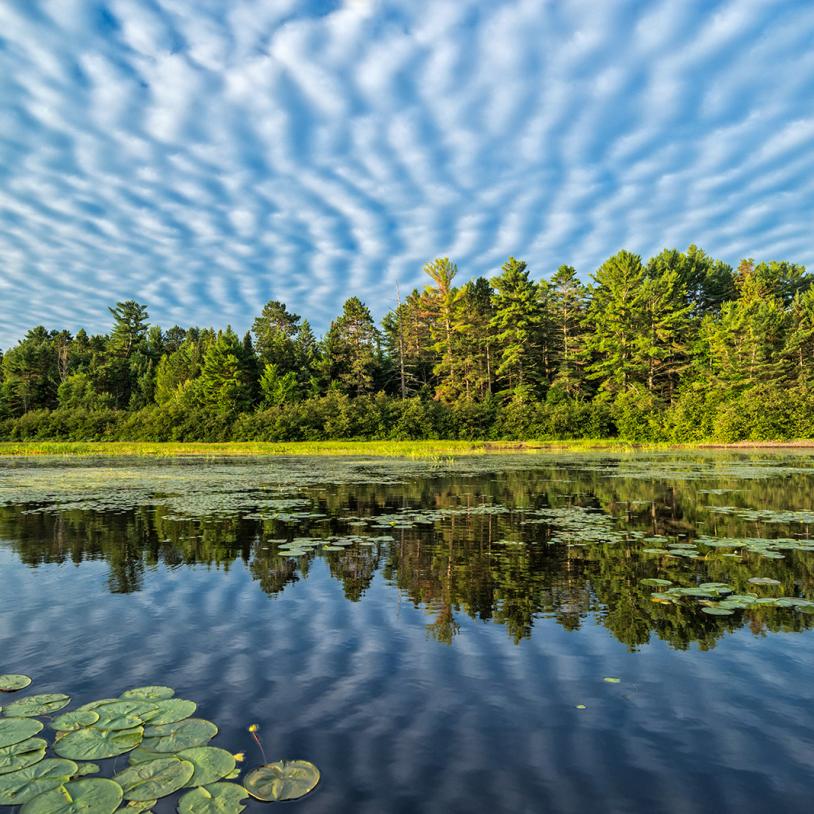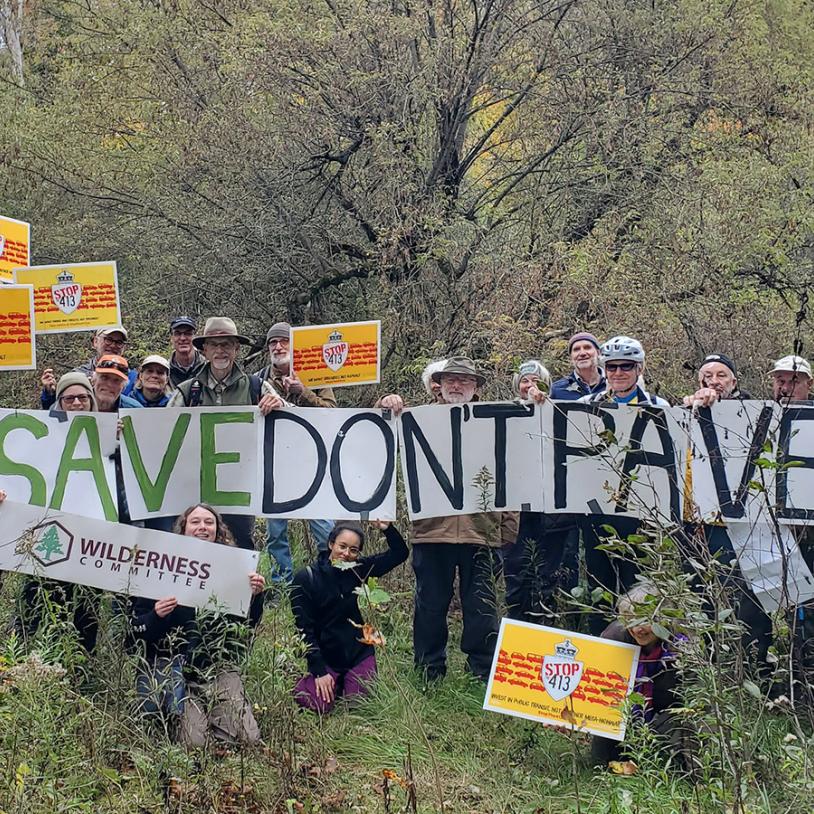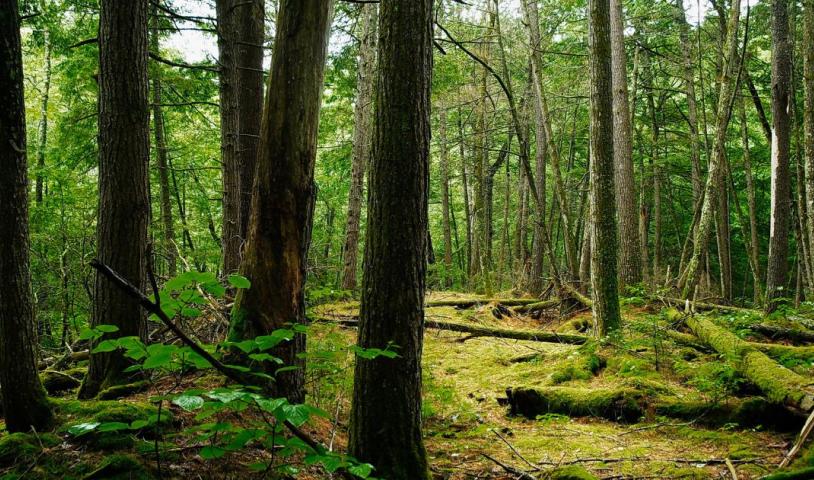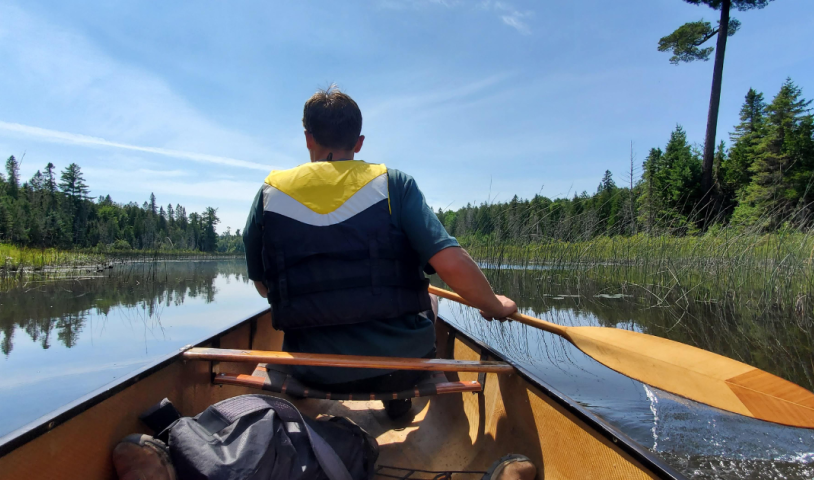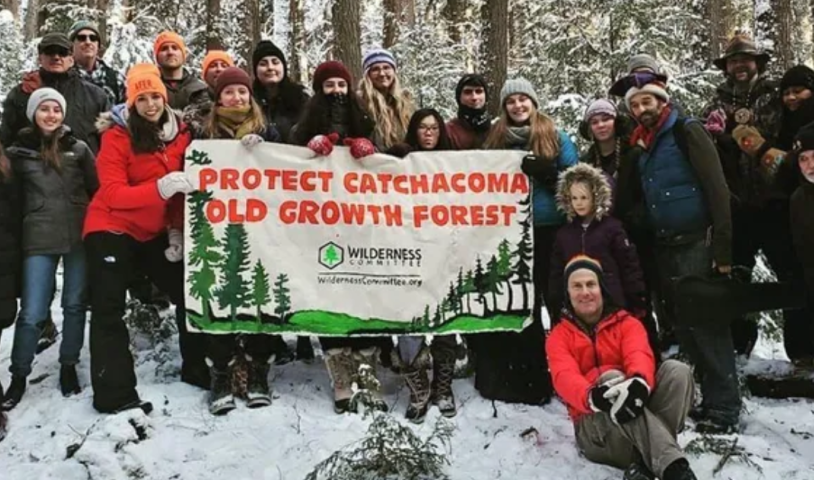Connecting people with places: 2024 Wilderness Committee field trip season
Thursday, October 17, 2024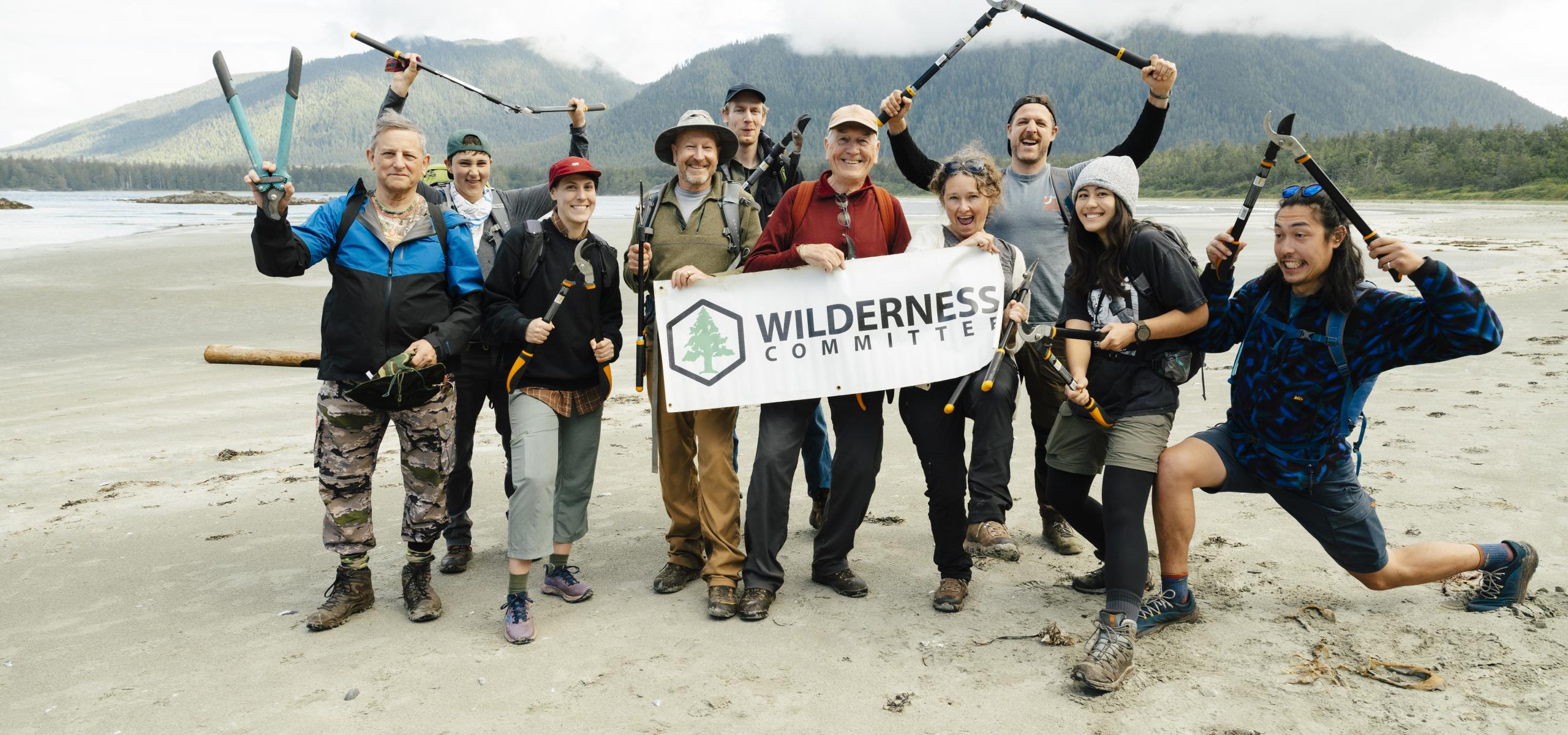
Every year, the Wilderness Committee gets out on the land with as many volunteers as we can to connect people with wild places. In 2024, we had another great spring, summer and early fall: thanks to you we organized 15 wild trips across the country, mobilizing more than 200 volunteers from the public and local partner groups to do hands-on work in support of nature conservation.
Our public fieldwork program is all about connecting people and places to foster relationships with landscapes, and grow recognition and understanding of the Nations that have always lived on and stewarded them. This work supplements our research expeditions and documentation projects where our team works with Indigenous community members and other experts to learn about the areas we’re advocating for and witness and document the destructive industries that threaten them.
Read on for a look at what we were up to in the woods this year in Ontario, Manitoba and British Columbia!
Ontario: Hearts and minds in forests and wetlands for conservation
Our 2024 spring and summer hiking and field season in Ontario brought hundreds of people out to experience the places we’re working to protect.
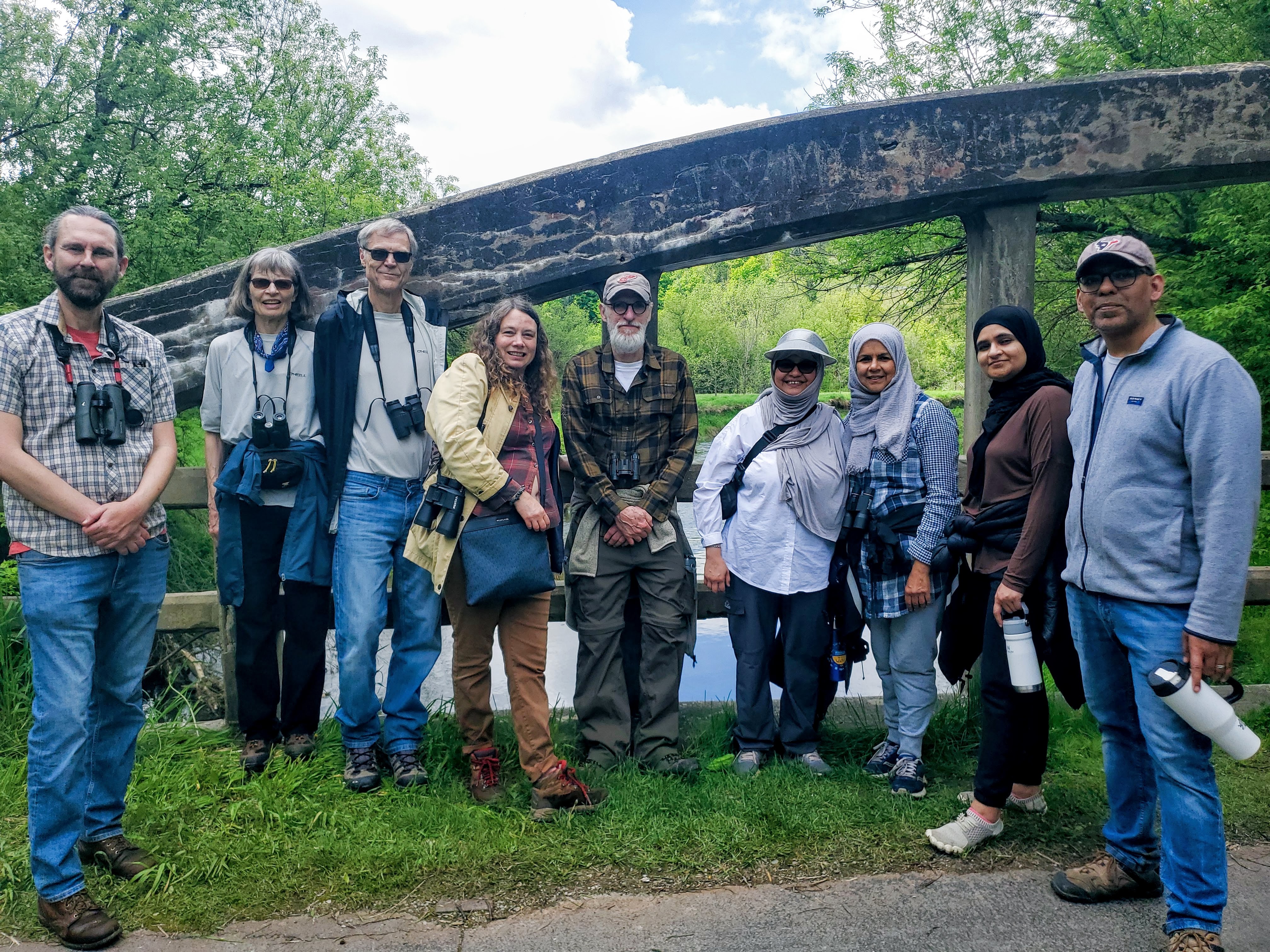
We kicked off the season with a “Rivers not Highways” birding hike along the Humber River in Vaughan’s Nashville Conservation Reserve, traditional territory of the Mississaugas of the Credit, Anishnaabeg, Haudenosaunee and Wendat.
With guidance from our Ontario Campaigner Katie Krelove and University of Guelph Conservation Biologist Ryan Norris, volunteers identified over 30 bird species in the mature forests, meadows and riverbeds of this natural gem, which was acquired as a reserve by the Toronto Region Conservation Authority in the 1970s for flood control.
Participants also got a first hand look at what’s at stake from the Ford government’s proposed Highway 413. The highway would cut through the reserve and over the river, destroying the sensitive ecosystems and opening the waterway that provides drinking water to millions to contamination from construction, salt and other pollutants.
On the rest of our spring and summer excursions we brought folks to rare old-growth forests on so-called “crown” land. These endangered ecosystems should be cherished and protected for their contribution to carbon storage, biodiversity, education and research and cultural values.
We led three public day hikes in Catchacoma Forest — a unique old-growth eastern hemlock forest in the Municipality of Trent Lakes, Peterborough County, traditional and treaty territory of the Michi Saagiig and Chippewa Nations — to introduce over 40 people to the special features of old forests and our efforts to protect them from logging. Participants measured trees and were introduced to forest bathing techniques to help soak in the health benefits that forests like Catchacoma have to offer.
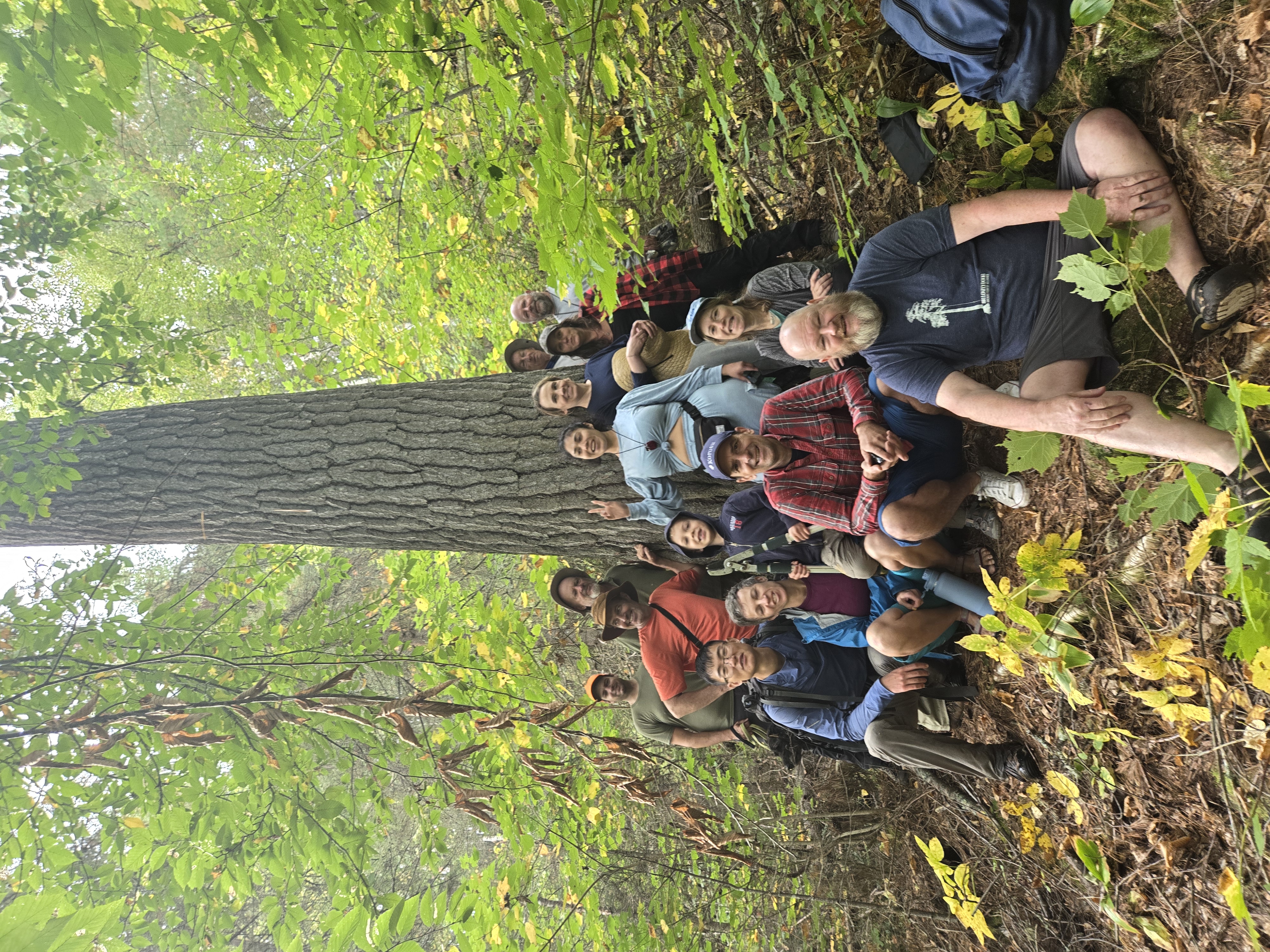
We also teamed up with Ian Jackson from Ontario Old Growth Conservation Volunteers, on canoe camping excursions to maintain old-growth trails around Rushbrook Lake in the Spanish Forest, Robinson-Huron Treaty territory and Blueberry Lake in Temagami, Robinson-Huron Treaty territory and traditional territory of the Teme-Augama Anishnabai.
These old-growth forests of red and white pine escaped past logging but are yet to be protected. During these trips we brought more than 30 people, including some first-time campers, together to canoe, camp and maintain old-growth trails, portages and campsites.
We connected over a shared love of forests and learned from ecologist Mike Henry and Anishnaabek Crane Clan Teacher and storyteller Alan Colley to learn about how to “read” the forest and develop stronger relationships with nature.
We worked, fished, ate, camped and revelled in the magic of old-growth forests.
“The three-day trip to Blueberry Lake was a true highlight of our summer. My husband, our six-year-old son and I thoroughly enjoyed the beautiful lake and the peaceful campsite. The wonderful group of dedicated volunteers provided fantastic company around the campfire. Having Alan Colley, an Indigenous knowledge carrier with us was a special treat. He shared captivating stories and taught our son how to fish. We even celebrated by cooking a bass caught by our son over the campfire with the group. Participating in trail and portage maintenance added to the fun and made the trip even more enjoyable. A heartfelt thank you to Katie and Ian for organizing such an incredible experience,” Agata Rudd.
Manitoba: The Bird River and protecting the wild
There are few Manitoba experiences as peaceful as drifting along a calm boreal river in a canoe. And that’s exactly what we did, again, for World Rivers Day this year. The Wilderness Committee, joined by 40 excited folks over two trips, spent the third weekend in September creating memories paddling along the lower Bird River in Sagkeeng First Nation territory. This waterway provides us with lessons of what we’ve preserved in this province… and what remains at risk.
Wilderness and Water Campaigner Eric Reder and Campaign Assistant Natalie Smith led these trips, and participants included a group of exchange students from Chile. Like many, these students were surprised to learn that the area east of Lake Winnipeg is part of the largest intact forest in the world.
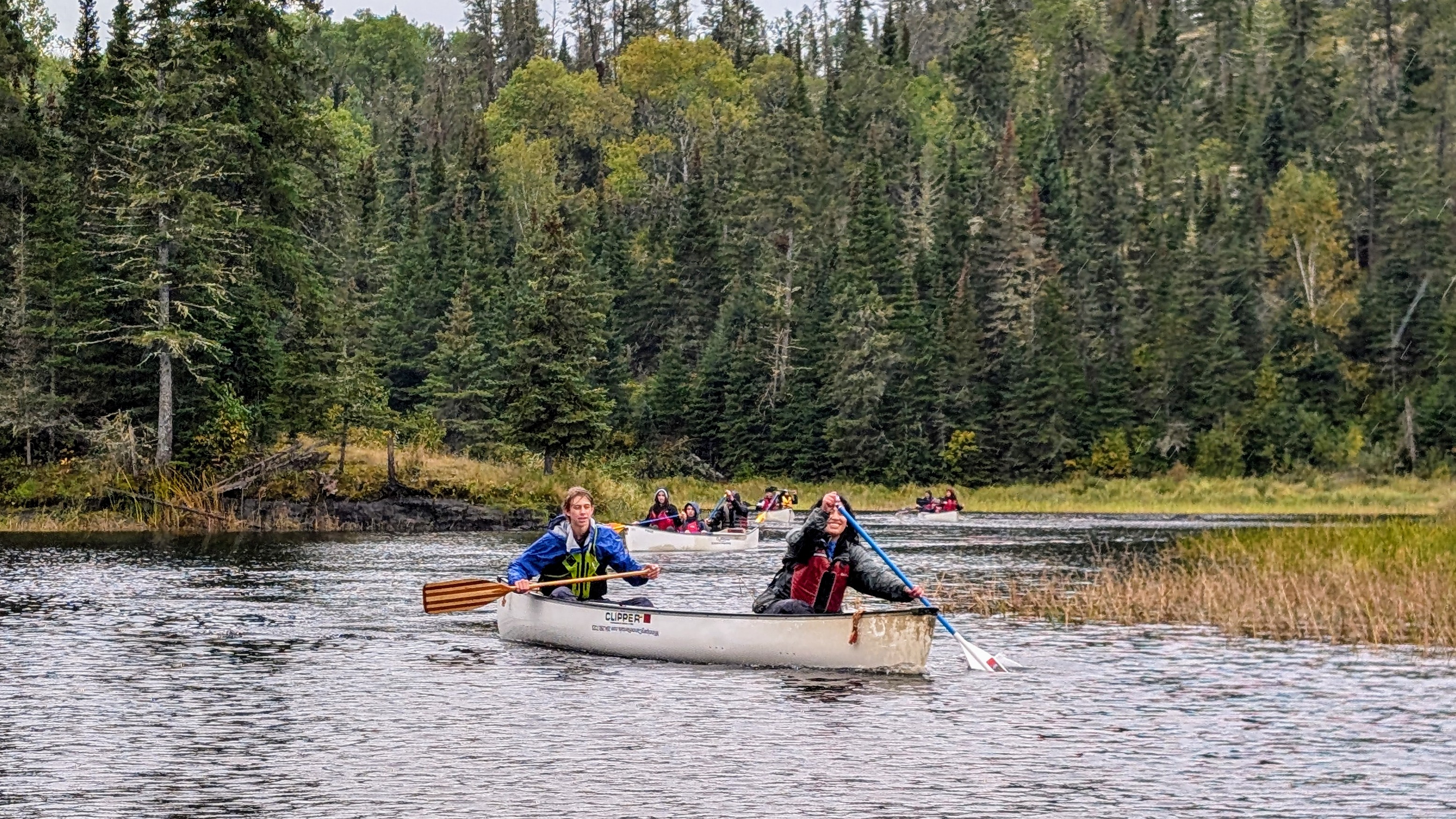
For more than a decade, we’ve worked to build relationships with Sagkeeng First Nation and advocate for the protection of the Bird River region. The Wilderness Committee has always recognized the unparalleled power of experiencing a place first hand in building support for its protection. Getting out on the Bird is a rite of passage in Manitoba, and we strive to get all Bird River paddlers to advocate for its protection.
We have organized Paddle for Protection trips for the past 11 years, since Tanco Mines threatened to flood the Bird with contaminated water from their Bernic Lake operation. A lot has changed in this time, but not towards the preservation of this iconic river. The entire lower Bird River has been claimed by private entities for mining and a massive land grab is underway for “critical minerals”.
Through our constant advocacy work on the river, that include these trips, the Wilderness Committee will always highlight and speak up for the waterways, forests and wetlands that make this place so special.
British Columbia: Another epic summer in the coastal rainforest
Trees towering more than 200 feet overhead, waves crashing along expansive white sand beaches and powerful partnerships with incredible organizations and volunteers: these are the hallmarks of the Wilderness Committee’s trail building program on the west coast.
Our 2024 season featured trips to four distinct and uniquely-powerful rainforest areas, all planned by our Campaign Organizer Em Hoffpauir with support from our Forest Campaigner Tobyn Neame.
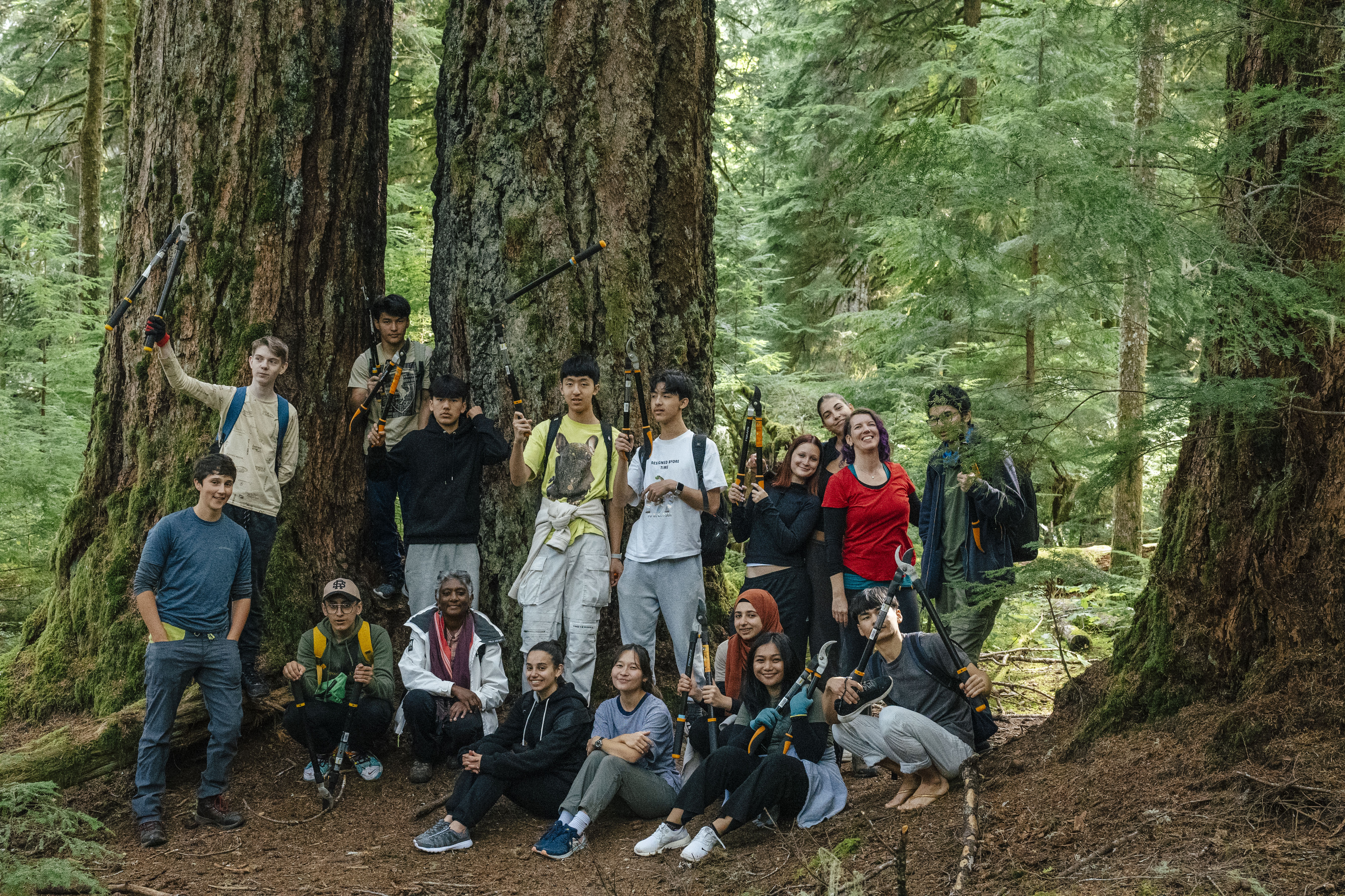
We started in the Koksilah Grove, an intact patch of rare coastal-Douglas fir old-growth forest on Cowichan Tribes territory west of Shawnigan Lake. Around 20 participants marveled at this gorgeous forest, which is highlighted by ancient fir tree close to 80 metres tall!
Next up was a pair of three-night trips to the Wildside Trail on Flores Island, in Ahousaht territory. This coastal trail traverses some of the most beautiful beaches in the country, winding through stunning old-growth forests along the way. Our work on the Wildside is done in support of the Ahousaht Guardians, and furthers the Nation’s efforts to reclaim land and decision-making authority on their territory.
In between our two trips to the island, the Ahousaht and the neighbouring Tla-o-qui-aht First Nation announced the culmination of their visionary land use plans — permanent conservancies over the majority of the remaining old-growth in Clayoquot Sound!
As the summer heated up, we stayed in the Clayoquot region, this time heading to Wah-nuh-jus–Hilthoois (Meares Island) Tribal Park in Tla-o-qui-aht territory. Here, we spent two full days building boardwalks on the renowned Big Tree Trail. This trip was a partnership with Colour the Trails, a national organization focused on improving access to outdoor activities for BIPoC (Black, Indigenous and People of Colour) adventurers.
Just a short water-taxi — or kayak! — from Tofino, this trail offers one of the best opportunities to witness giant red cedars and iconic old-growth forest — an opportunity taken by thousands of tourists every year.
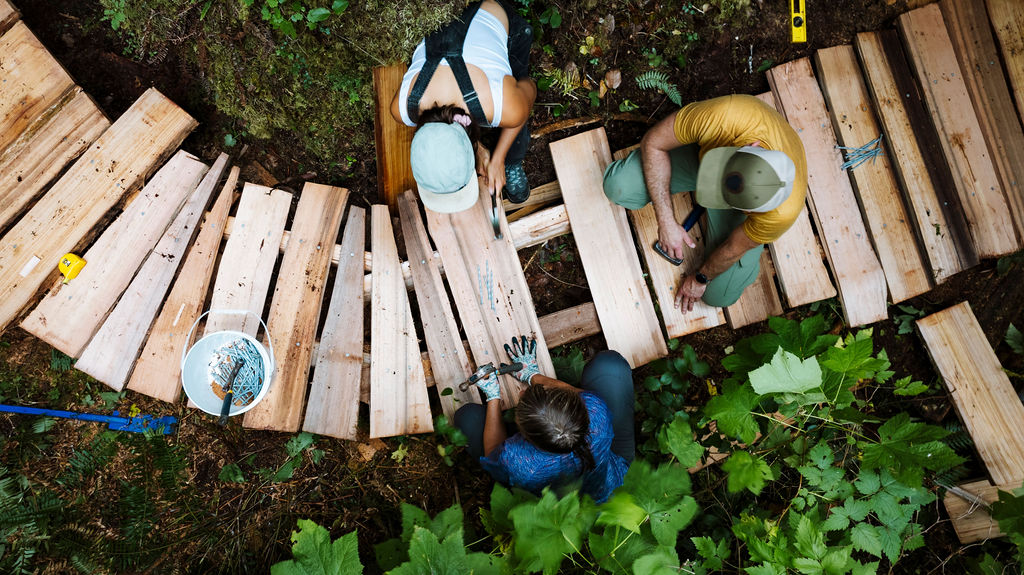
In September, we were back in the Koksilah Grove for a one-day trail maintenance trip. An amazing group of youth from the Intercultural Association of Victoria, an organization that supports immigrants and refugees in the Capital Region, joined us here for an incredible day out in the woods.
An amazing group of youth from the Intercultural Association of Victoria joined us here for an incredible day out in the woods. Later that month, we traveled to the legendary Walbran Valley, or Kaxi:ks, for a weekend of boardwalk construction and trail maintenance with a team of volunteers.
Our work in the Walbran is done in partnership with the Friends of Carmanah-Walbran, a local group dedicated to the protection of this area.
Thanks to the leadership of the Pacheedaht First Nation, there is no immediate logging threat in the central Walbran, and hope remains that the Valley will be permanently protected under the Nation’s land use plan.
Sharing the stories of our field programs on the west coast is important for us, and we dedicated time and resources to documenting many of our trips this year to give you a glimpse of what to expect in our next rail trips — stay tuned for exciting news on this front in the near future!
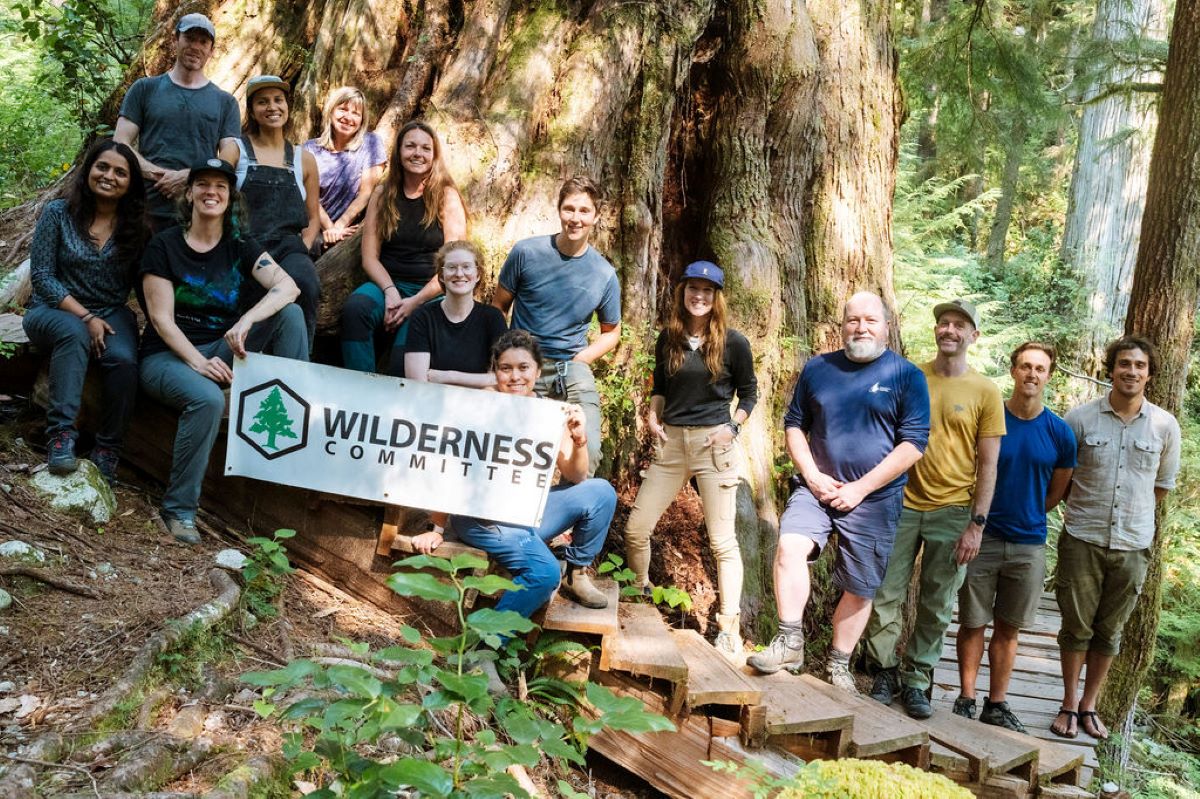
The Wilderness Committee takes every opportunity to work with our communities, at rallies, demonstrations, public meetings and other events, and we’ll continue this work through the fall and winter. Our public field trips and expeditions are concentrated from late spring to early fall, and 2024 was another action-packed season!
We extend our gratitude to the Nations who welcomed us on their territories, the local groups and experts we partnered with, and of course to the hundreds of volunteers who joined us out on the land and worked so hard to support conservation.
Like all our work at the Wilderness Committee, our public field work is only possible because of your support — if you can pitch in to help make this program even more successful that would mean the world to us.
Katie, Eric, Em and the rest of our team are already starting to lay plans for our 2025 season, and we’d love to have you join us then.
See you on the trail next spring!
